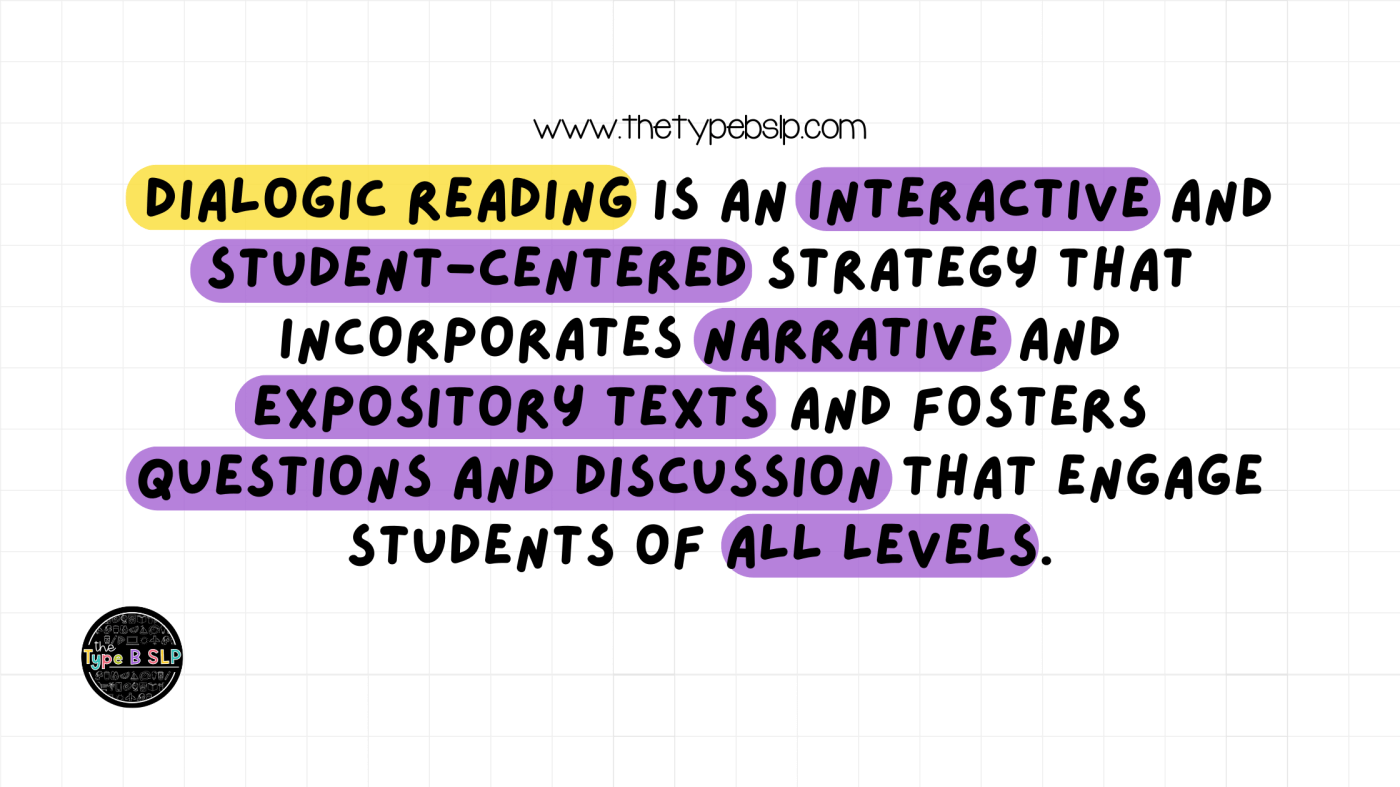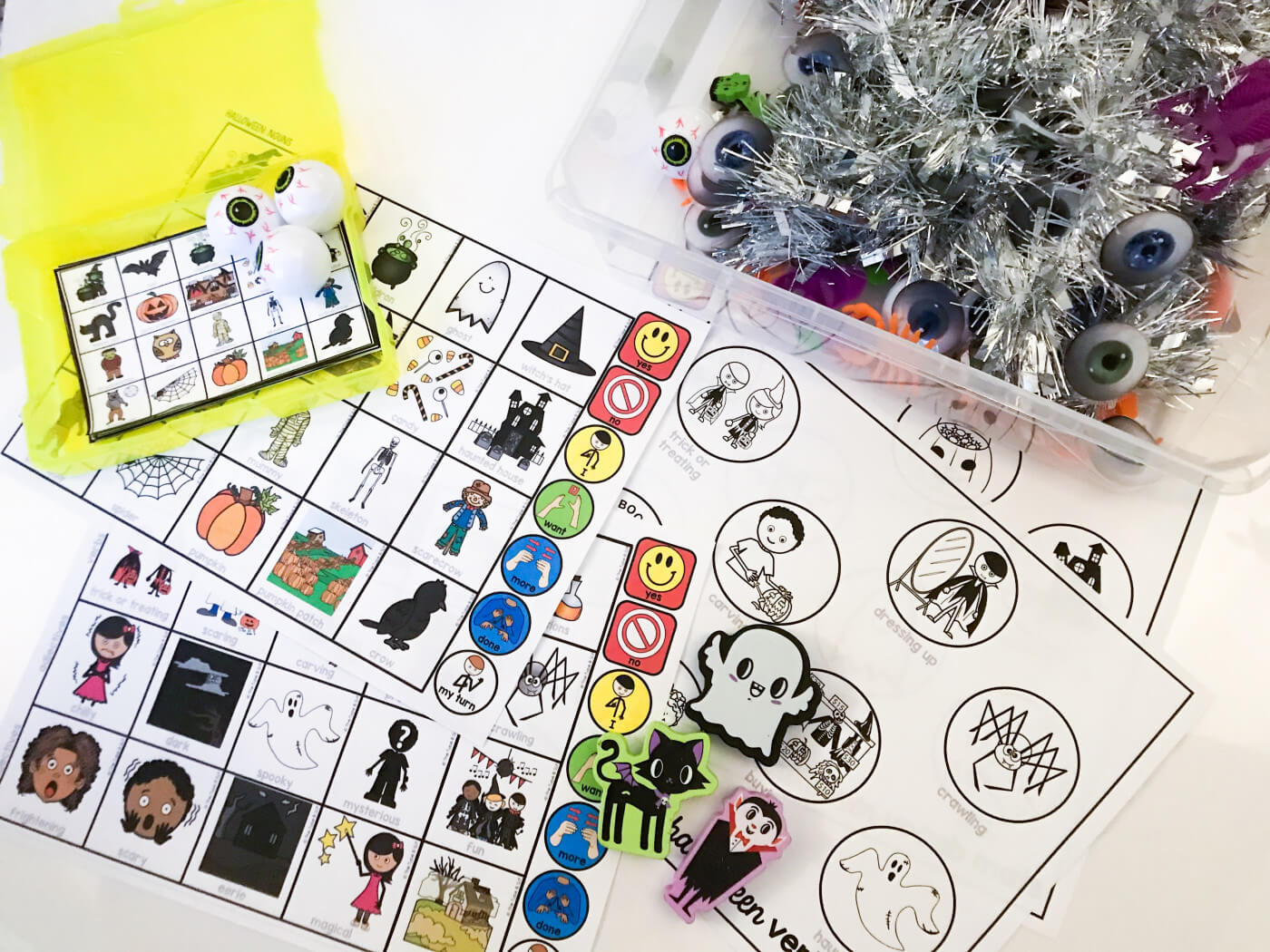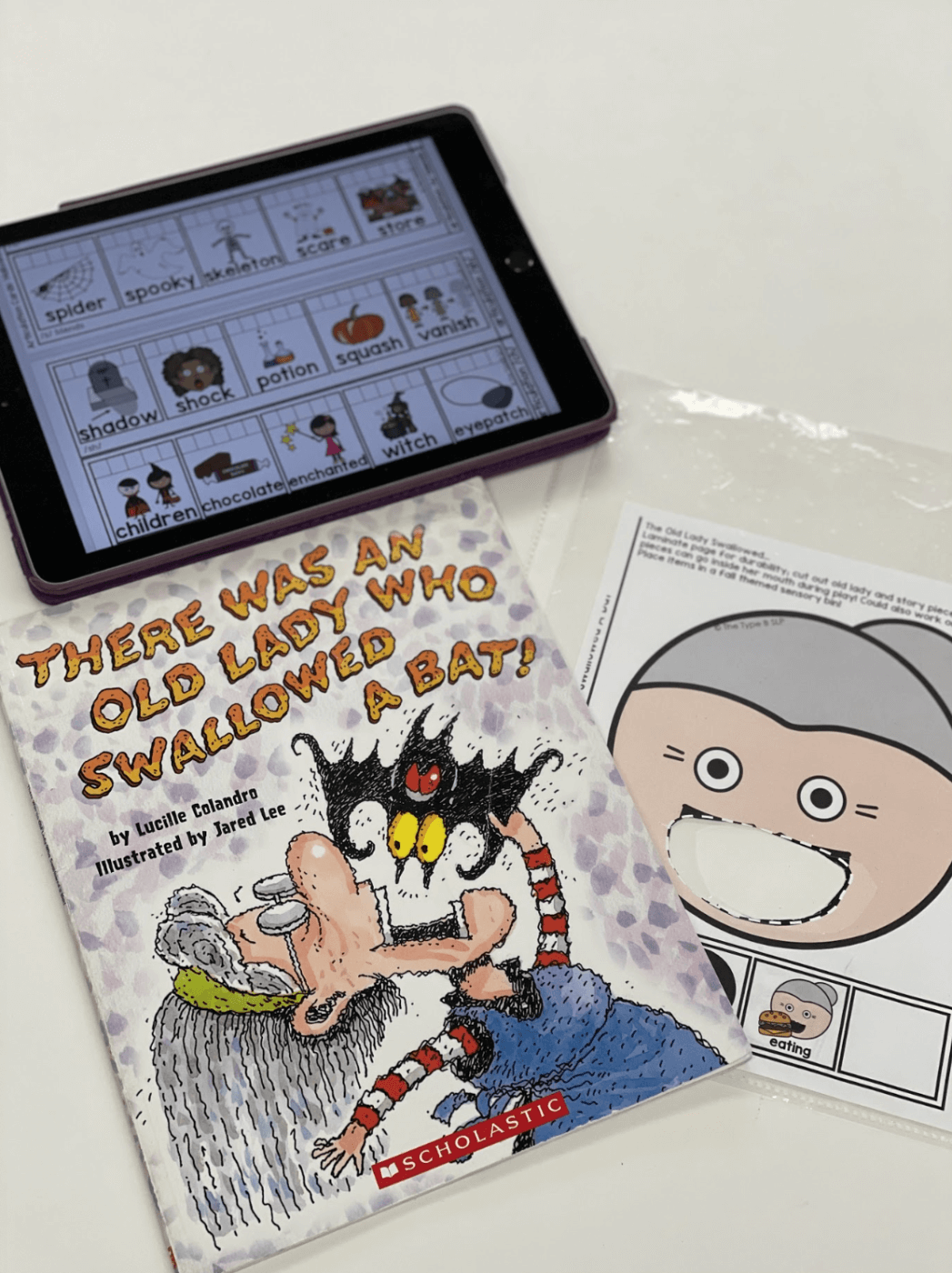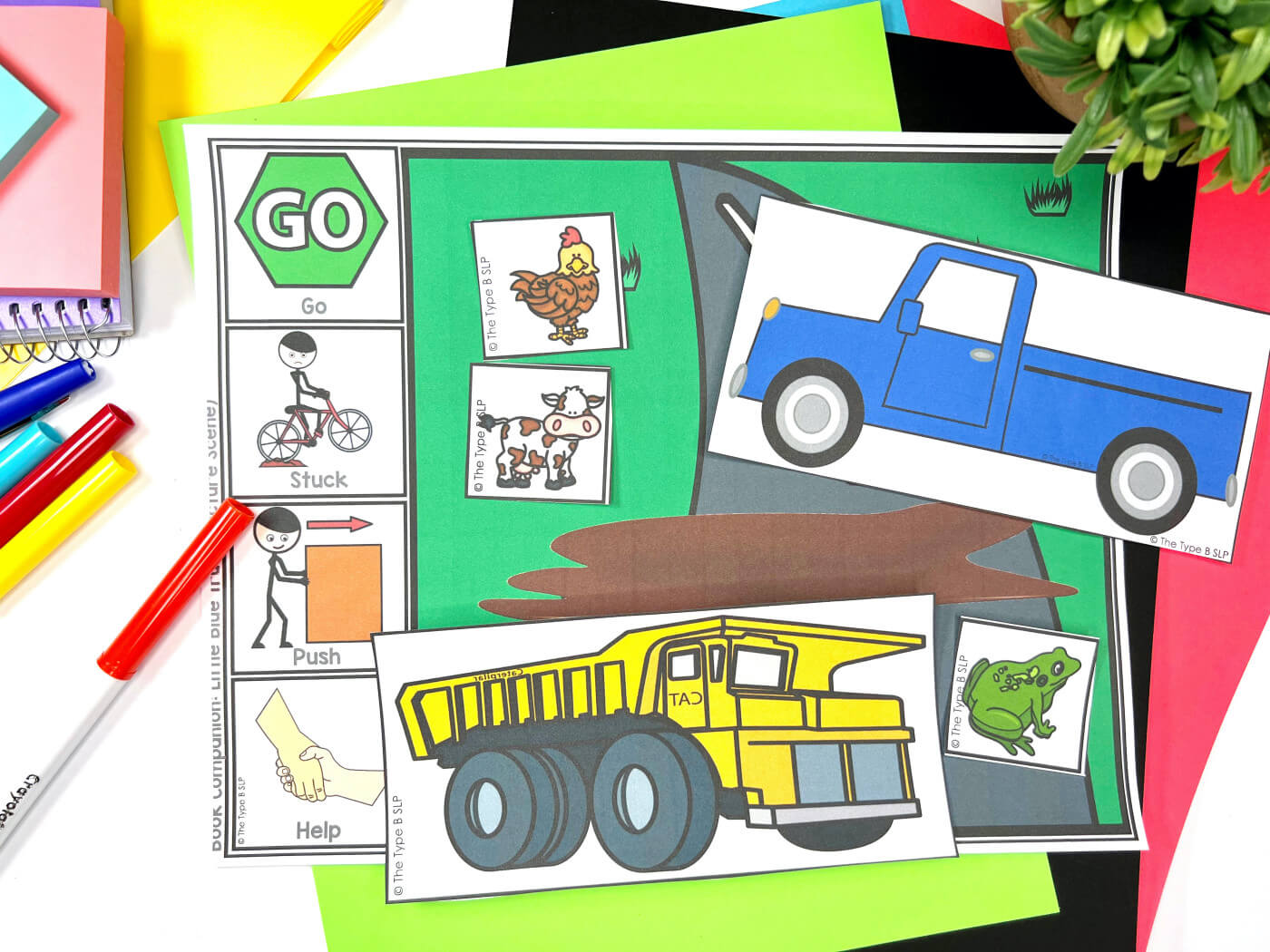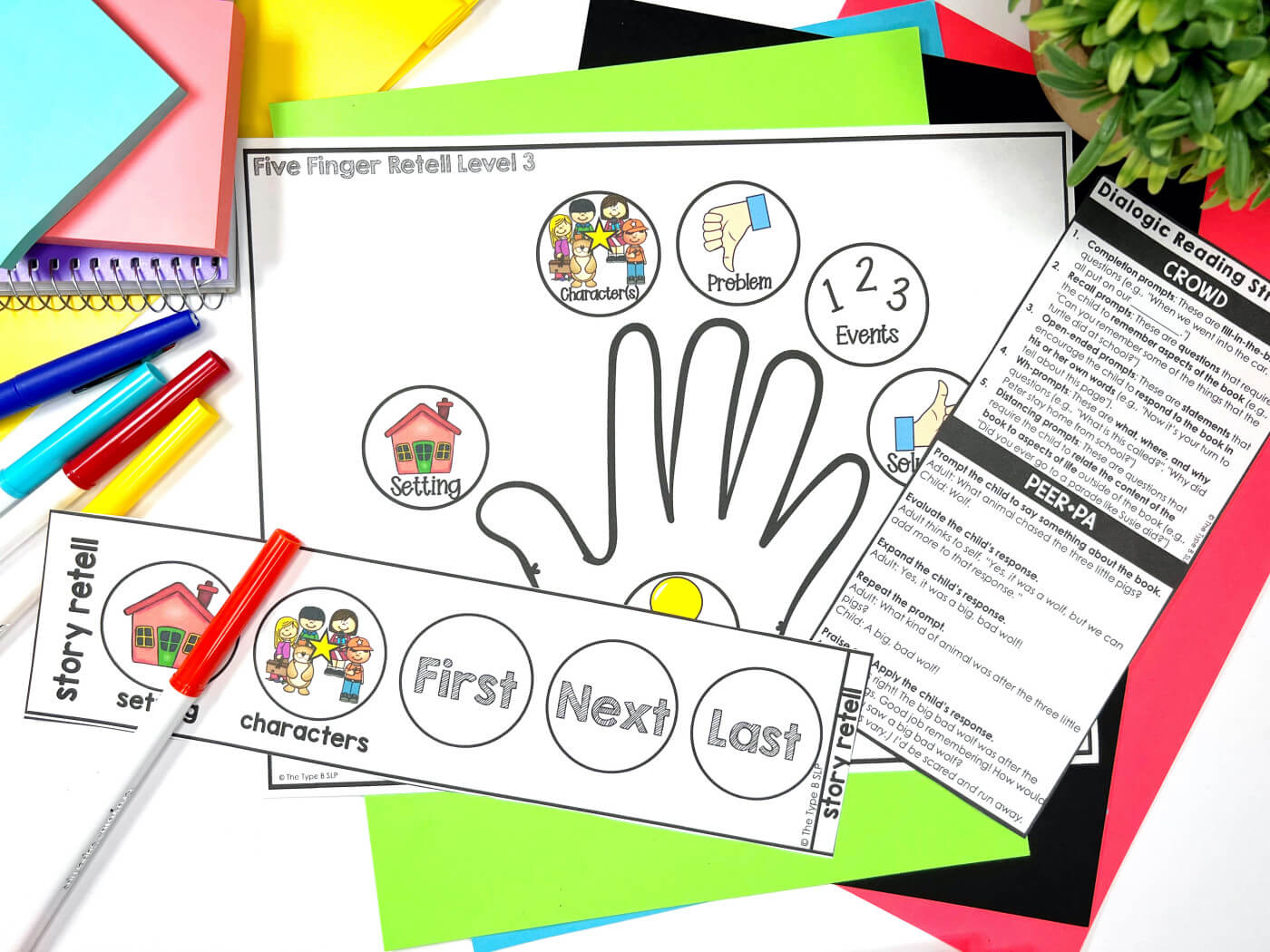
Using a dialogic reading strategy in speech therapy
Ever have those sessions where you feel like you're just using random visuals and you're not even sure if you're addressing the child's goals? 🙋♀️ I've been there! In this post, I'm going to share a strategy that I have found incredibly helpful: dialogic reading.
👉 Need play-based visuals inspo? Check out my last blog post, Play-based Therapy Using your Favorite Read Aloud Books!
What IS dialogic reading?You might have heard this buzzword - and that's because it's an AMAZING strategy that integrates prompting with questions and reading. Dialogic reading is an interactive technique based on the extensive research of Grover J. Whitehurst, Ph.D. This strategy encourages adults to prompt children with questions and engage them in discussions while reading to them. I love dialogic reading because it: ✨ is interactive & student-centered ✨ incorporates narrative and expository text and fosters questions and discussion throughout, and ✨ can be used with students at all levels. (Zevenbergen & Whitehurst, 2003) We are SO good at prompting students with questions - but how do you know what questions to ask or whether you're asking a question that engages and promotes learning? |
How does dialogic reading work?Traditionally, dialogic reading is implemented by reading the same book multiple times and utilizing three levels of questions. (Flynn, 2011) I LOVE having these 3 levels in the back of my mind during a session - they really help to provide structure to my sessions.
I'll break down the 3 levels for you below with examples from my Seasonal Book Companion Visuals, using one of my favorite winter read alouds, Sneezy the Snowman! 👇
The 3 levels of dialogic reading help to provide an overall framework for questions - the CROWD and PEER+PA strategies take this groundwork a step further... |
What are the CROWD and PEER+PA strategies?In the moment, it can be SO difficult to remember what kinds of questions you should be asking... I've been there. That's why I love the CROWD and PEER+PA strategies. 🙌 The CROWD strategy consists of 5 types of questions that adults can use when engaging in dialogic reading. The acronym stands for: Completion Prompts, Recall Prompts, Open-ended Prompts, Wh-Prompts, and Distancing Prompts. (Zevenbergen & Whitehurst, 2003)
What does this look like in real time? Let's take a look using my visuals from my Digital Book Companions!
These questions are often more basic and help to engage students while exploring their understanding of the text and introducing them to new vocabulary. The PEER+PA strategy can be used the help the adult encourage deeper responses. The acronym stands for: Prompt the child to say something about the book, Evaluate the child's response, Repeat the prompt, + Praise and Apply the child's response. (Zevenberge & Whitehurst, 2003)
I love to use my Seasonal Book Companion Visuals (and my No Print No Prep Digital Book Companions!) to support the CROWD and PEER+PA strategies and incorporate play into my sessions. They are super simple, easy prep book companions for your little learners. Each Book Companion comes with a dialogic reading bookmark - you can keep it on your clipboard to reference or model and share with your families! |
I hope this blog post has given you a TON of ideas for supporting read alouds in your sessions with play-based visuals and dialogic reading strategies!
Happy Reading!
Abby
👉 Check out my Amazon page (affiliate) for themed book/toy ideas!
SourcesFlynn, K. (211). Developing Children's Oral Language Skills through Dialogic Reading. Teaching Exceptional Children, 44(2), 8-16. https://doi.org/10.1177/004005991104400201 Zevenberg, A.A. & Whitehurts, G.J. (2003). Dialogic reading: A shared picture book reading intervention for preschoolers. In A. van Kleeck, S.A. Stahl & E.B. Bauer (Eds.), On reading books to children: Parents and teachers (pp. 177-200). Lawrence Erlbaum Associates Publishers. |
- Choosing a selection results in a full page refresh.
- Press the space key then arrow keys to make a selection.

